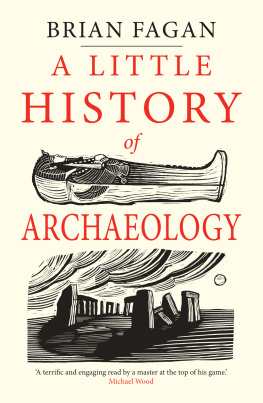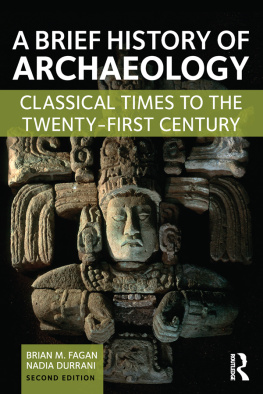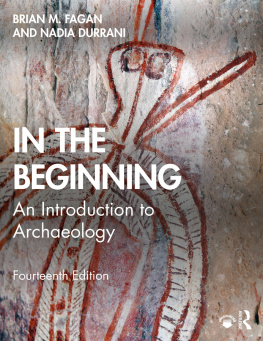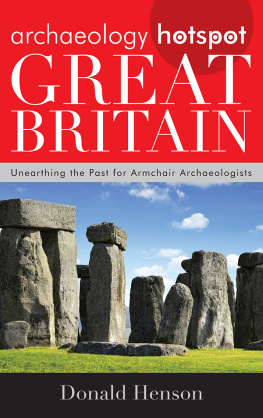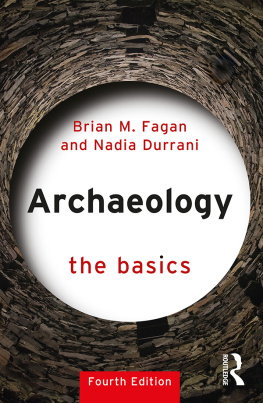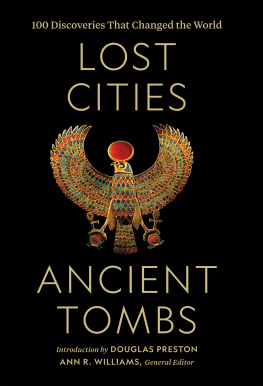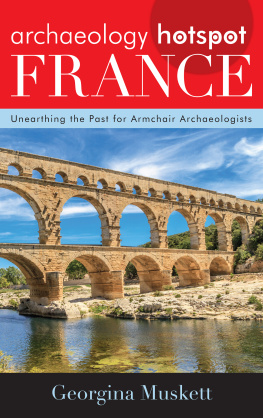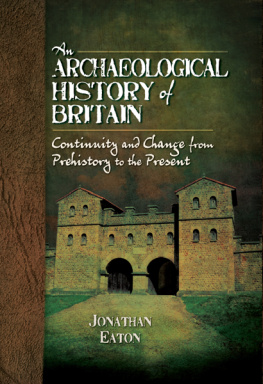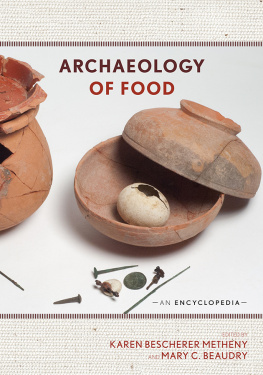A LITTLE HISTORY OF ARCHAEOLOGY

Copyright 2018 Brian Fagan
All rights reserved. This book may not be reproduced in whole or in part, in any form (beyond that copying permitted by Sections 107 and 108 of the U.S. Copyright Law and except by reviewers for the public press) without written permission from the publishers.
For information about this and other Yale University Press publications, please contact:
U.S. Office:
Europe Office:
Set in Minion Pro by IDSUK (DataConnection) Ltd
Printed in Great Britain by TJ International Ltd, Padstow, Cornwall
Library of Congress Control Number: 2017959448
ISBN 978-0-300-22464-1
A catalogue record for this book is available from the British Library.
10 9 8 7 6 5 4 3 2 1
To
Vernon Scarborough
Water expert extraordinaire
Who told me about Bali and offers
encouragement at every turn
Contents
CHAPTER 1

The Backward-Looking Curiosity
O n 24 August AD 79, Italys Mount Vesuvius erupted like a great cannon. An enormous fountain of ash, red-hot lava, rocks and smoke burst from the volcano. Daylight turned into darkness. Ash fell like heavy snow, blanketing the nearby cities of Herculaneum and Pompeii.
About midnight, an avalanche of scalding gases, mud and rocks slid down the mountain slopes and cascaded through the two Roman towns. Herculaneum vanished completely. Only the roofs of Pompeiis larger buildings poked through the volcanic debris. Hundreds of people perished. Wrote an eyewitness, the author Pliny the Younger: You could hear the shrieks of the women, the wailing of infants, and the shouting of men. Then there was silence.
Soon only a large, grassy mound marked the site of Pompeii. More than sixteen centuries passed before anyone disturbed the two buried cities. Then, in 1709, a peasant digging a well on top of Herculaneum uncovered some sculpted marble. A local prince sent workmen underground. They recovered three intact female statues. This chance discovery led to treasure hunting in the heart of the buried city. From this casual looting of Roman artefacts buried deep in volcanic ash emerged the science of archaeology.
Gold-laden pharaohs, lost civilisations, heroic adventures in remote lands many people still believe that archaeologists are romantic adventurers who spend their lives digging into pyramids and lost cities. Todays archaeology is far more than hazardous journeys and spectacular discoveries. It may have begun as treasure hunting and alas, the looting of sites continues alongside serious archaeology today. But treasure hunting isnt proper archaeology: its fast-moving, ruthless digging with one objective to uncover valuable objects to sell to wealthy collectors. Contrast this with archaeology, the scientific study of the past, of human behaviour over 3 million years.
How did archaeology develop from uncontrolled searches for astonishing finds and forgotten peoples into the serious pursuit of the past that it is today? This book tells the story of archaeology through the work of some of the most famous archaeologists, from the casual observers of four centuries ago to the close-knit research teams of the twenty-first century. Many pioneering archaeologists were colourful individuals who spent months working alone in remote lands. At some point in their lives, all of them developed a fascination for the past. One early scholar called archaeology the backward-looking curiosity. He was right. Archaeology is curiosity about whats behind us.
I first experienced archaeology as a teenager on a rainy day in southern England, when my parents took me to Stonehenge (see ). The massive stone circles towered above us. Low, grey clouds swirled in the gloom. We walked among the stones (you could in those days) and looked out at silent burial mounds on nearby ridges. Stonehenge cast its spell over me, and I have been fascinated by archaeology ever since.
I became curious about Englishman John Aubrey (162697), who often visited Stonehenge and discovered another dramatic stone circle at nearby Avebury, when he galloped into it while foxhunting in 1649. Aubrey puzzled over both Avebury and Stonehenge, both of them said to have been built by Ancient Britons. Who were these savage people who wore skins? They were, Aubrey supposed, two or three degrees less savage than the [Native] Americans.
Aubrey and his successors knew little of Europes past before the Romans. Certainly, there were burial mounds, stone circles and other monuments for them to examine; also a confusing muddle of stone tools, pottery and metal objects that appeared from ploughed fields and the occasional digging of crude trenches into burial mounds (see ). But these had belonged to completely unknown people not Romans from a city like Pompeii, buried on an exact date that is recorded in historical documents.
Serious digging began at Herculaneum in 1748. King Charles II of Naples commissioned Spanish engineer Roque Joaqun de Alcubierre to probe the depths of the city. Alcubierre used gunpowder and professional miners to blast and tunnel his way through the ash to uncover intact buildings and magnificent statues. The king displayed the finds in his palace, but nevertheless, his excavations were a closely guarded secret.
A German scholar, Johann Joachim Winkelmann (171768), was the first serious researcher. In 1755, he became librarian to Cardinal Albani in Rome (which required him to convert to Catholicism, much to the horror of his Protestant friends). This gave him access to books, and also to the objects uncovered by Alcubierre. Seven years passed before Winkelmann could actually visit the secret excavations. By then, he had unrivalled knowledge of Roman art more like the knowledge of modern archaeologists than of his contemporaries. He was the first scholar to study artefacts from the towns in their original positions.
Winkelmann pointed out that these objects were vital sources of information about their owners and about daily life in Roman times about the people of the past. In an era of uncontrolled looting, this was a revolutionary idea. Unfortunately, Winkelmann could never test his theories with his own excavations: he was murdered by thieves for some gold coins while awaiting a ship in Trieste in 1768. This remarkable scholar was the first to establish a basic principle of archaeology: all artefacts, however humble, have a story to tell.
Sometimes the stories are unusual. I once visited an abandoned Central African village dating to the 1850s. The site was a jumble of tumbledown cattle enclosures, grinding stones and pot fragments. There appeared to be nothing of any great interest. Then I picked up a 500,000-year-old stone axe lying among the pottery. I realised at once that the axe must have been carried to the village from elsewhere, for there were no other stone tools or signs of very early human occupation around.
This was perhaps the first time that I thought about tools from the past as storytellers. I imagined a villager, perhaps a child, picking up the beautifully shaped axe in river gravel about 8 kilometres away and carrying it home. Back home, people looked at it, shrugged and threw it away. Perhaps an elderly villager remembered coming across another such axe in his youth, and so the finder kept it for years. There was a story here; but alas, it had long vanished. Only the stone axe remained.
The story of archaeology begins with the curiosity of landowners and travellers. Wealthy Europeans with a taste for classical art often took what was called the Grand Tour to Mediterranean lands. They returned laden with Roman, and sometimes Greek, works of art. Stay-at-home landowners started digging into barrows (burial mounds) on their properties. At dinner parties back home, they would proudly display rude relics of 2,000 years. The diggers were amateurs, people with no archaeological training whatsoever; their ancestors were antiquarians (people interested in the ancient past) like John Aubrey, who had puzzled over Stonehenge.
Next page
